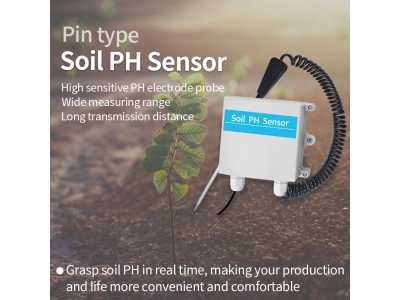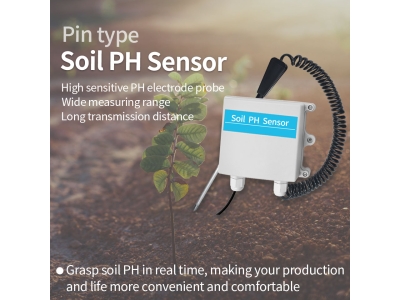Agriculture is the backbone of many economies around the world, and the success of farming largely depends on the quality of soil. Soil health is crucial for the growth and productivity of crops, and farmers need to constantly monitor and manage the condition of their soil to ensure optimal yields. Traditionally, soil monitoring has been a time-consuming and labor-intensive process, but with the advancement of technology, farmers now have access to real-time soil monitoring using sensor systems. This innovative approach has the potential to revolutionize the way farmers manage their land, improve crop yields, and reduce environmental impact.

Real-time Soil Monitoring
Real-time soil monitoring involves the use of sensor systems to continuously collect data on various soil parameters such as moisture levels, temperature, pH, and nutrient content. These sensors are typically installed in the soil at different depths and locations within the farm, and they transmit the collected data to a central database or a mobile application in real-time. This allows farmers to have a comprehensive understanding of their soil conditions and make informed decisions about irrigation, fertilization, and other farming practices.
he Benefits of Real-time Soil Monitoring
There are several benefits of real-time soil monitoring for farmers. Firstly, it provides them with accurate and up-to-date information about their soil conditions, allowing them to make timely and precise adjustments to their farming practices. This can lead to improved crop yields, better resource utilization, and reduced input costs. Additionally, real-time soil monitoring can help farmers identify and address soil health issues before they escalate, leading to more sustainable and environmentally friendly farming practices.
Empowering Farmers
Real-time soil monitoring empowers farmers by giving them the tools and knowledge to make data-driven decisions about their farming practices. With access to real-time soil data, farmers can optimize their irrigation schedules to conserve water, reduce the use of chemical fertilizers and pesticides, and minimize the risk of soil erosion. This not only leads to improved crop yields and profitability but also contributes to the long-term sustainability of their land.
Furthermore, real-time soil monitoring can help farmers adapt to the effects of climate change by providing them with insights into how their soil is responding to changing weather patterns. This allows farmers to adjust their farming practices accordingly, ensuring that their crops remain resilient in the face of unpredictable weather conditions.
hallenges and Considerations
While real-time soil monitoring offers many benefits to farmers, there are also challenges and considerations that need to be addressed. One of the main challenges is the cost of implementing sensor systems and the associated data management infrastructure. However, as technology continues to advance, the cost of sensor systems is expected to decrease, making them more accessible to farmers.
Another consideration is the need for training and support for farmers to effectively utilize real-time soil monitoring technology. Many farmers may not have the technical expertise to interpret soil data and make informed decisions based on the information collected by sensor systems. Therefore, it is important to provide farmers with the necessary training and support to maximize the benefits of real-time soil monitoring.
Conclusion
Real-time soil monitoring using sensor systems has the potential to revolutionize the way farmers manage their land. By providing farmers with accurate and up-to-date information about their soil conditions, real-time soil monitoring empowers them to make data-driven decisions that can lead to improved crop yields, reduced input costs, and more sustainable farming practices. While there are challenges and considerations that need to be addressed, the benefits of real-time soil monitoring far outweigh the drawbacks. As technology continues to advance, real-time soil monitoring is expected to become an essential tool for farmers around the world, helping them to adapt to the challenges of modern agriculture and ensure the long-term sustainability of their land.






